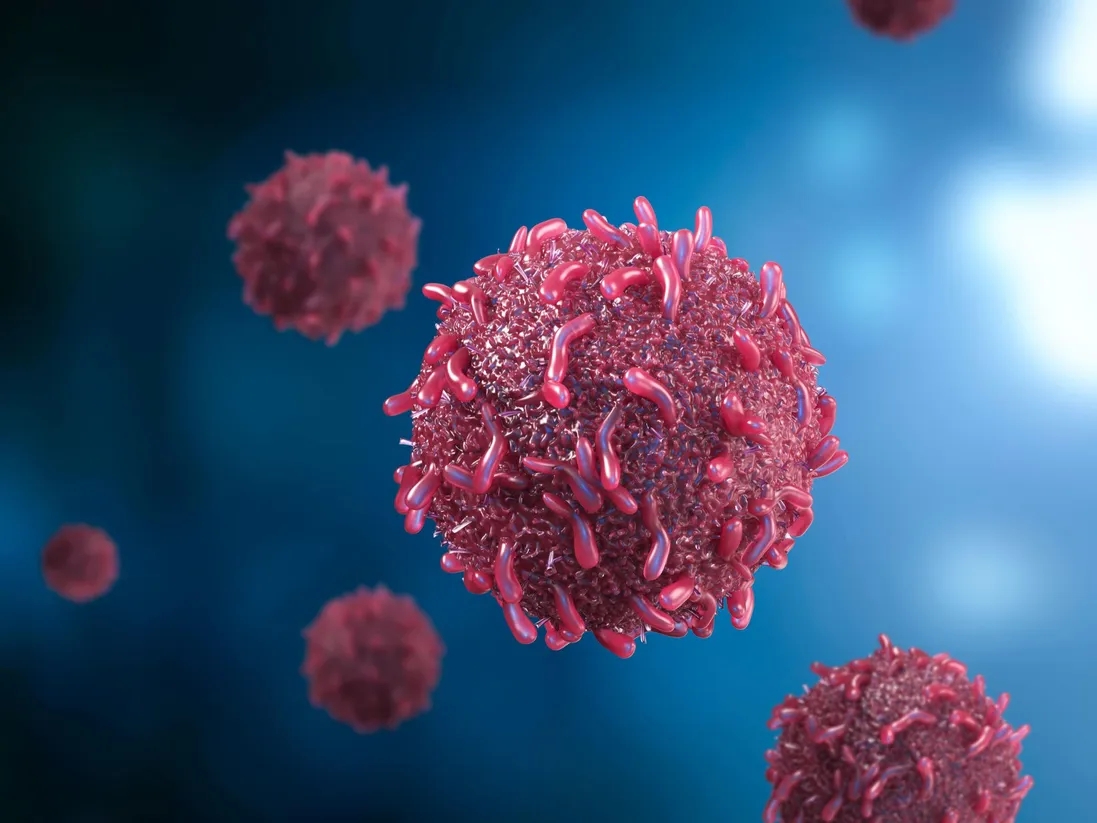博文
癌症之谜解开:科学家发现黑色素瘤肿瘤如何控制死亡
||
癌症之谜解开:科学家发现黑色素瘤肿瘤如何控制死亡
诸平



据美国匹兹堡大学(University Of Pittsburgh)2023年1月9日报道,科学家解开了癌症之谜:发现黑色素瘤肿瘤如何控制死亡(Cancer Mystery Solved: Scientists Discover How Melanoma Tumors Control Mortality)。
黑色素瘤(Melanoma)是一种皮肤癌,发生在皮肤中产生色素的细胞(黑色素细胞)中。它是一种更具侵袭性的皮肤癌,如果不及早发现和治疗,可能会扩散(转移)到身体的其他部位(Fig. 1)。
匹兹堡大学医学院(University of Pittsburgh School of Medicine)的一组科学家发现了黑色素瘤肿瘤如何控制其死亡率之谜中缺失的拼图。相关研究结果于2022年11月10日已经在《科学》(Science)杂志网站发表——Pattra Chun-On, Angela M. Hinchie, Holly C. Beale, Agustin A. Gil Silva, Elizabeth Rush, Cindy Sander, Carla J. Connelly, Brittani K.N. Seynnaeve, John M. Kirkwood, Olena M. Vaske, Carol W. Greider, Jonathan K. Alder. TPP1 promoter mutations cooperate with TERT promoter mutations to lengthen telomeres in melanoma. Science, 10 November 2022, 378(6620): 664-668. DOI: 10.1126/science.abq0607. https://www.science.org/doi/10.1126/science.abq0607
参与此项研究的有来自美国宾夕法尼亚州匹兹堡多罗西P. 西蒙斯和理查德P. 西蒙斯间质性肺疾病中心,肺、过敏和重症监护医学部(Dorothy P. and Richard P. Simmons Center for Interstitial Lung Disease, Division of Pulmonary, Allergy, and Critical Care Medicine, Pittsburgh, PA, USA)、美国匹兹堡大学公共卫生学院(School of Public Health, University of Pittsburgh, Pittsburgh, PA, USA.)、美国加州大学圣克鲁兹分校(University of California, Santa Cruz, CA, USA)、美国匹兹堡大学医学中心希尔曼癌症研究所(University of Pittsburgh Medical Center, Hillman Cancer Institute, Pittsburgh, PA, USA)、美国约翰霍普金斯大学医学院(Johns Hopkins University School of Medicine, Baltimore, MD, USA)、美国匹兹堡大学医学院(University of Pittsburgh School of Medicine, Pittsburgh, PA, USA)以及泰国曼谷朱拉蓬皇家学院(Chulabhorn Royal Academy, Bangkok, Thailand)的研究人员。
在此论文中,研究者描述了他们如何识别出特定的基因变化,这些变化可以让肿瘤快速生长,同时防止它们自身死亡。这一发现可能对肿瘤学家理解和治疗黑色素瘤的方式产生重大影响。
美国匹兹堡大学医学院肺、过敏及重症监护医学部(Division of Pulmonary, Allergy, and Critical Care Medicine at Pitt’s School of Medicine)助理教授乔纳森·阿尔德(Jonathan K. Alder, Fig. 2)说:“我们所做的事情本质上是显而易见的,基于之前的基础研究,并与患者身上发生的事情联系起来。”
端粒(Telomeres)是染色体末端的保护帽,需要防止DNA降解。在健康细胞中,端粒随着每个复制周期而变短,直到它们变得如此短以至于细胞无法再分裂。端粒长度维持的中断会导致严重的疾病。短端粒综合症(Short telomere syndromes)会导致过早衰老和死亡,但超长端粒与癌症有关。
多年来,科学家们观察到黑色素瘤的端粒非常长,特别是与其他类型的癌症相比。
乔纳森·阿尔德说:“黑色素瘤和端粒维持之间有一些特殊的联系。黑素细胞要转化为癌症,最大的障碍之一是让自己永生。一旦它能做到这一点,它就在通往癌症的路上。”
端粒酶蛋白负责延长端粒,保护它们免受损伤,防止细胞死亡。端粒酶在大多数细胞中是不活跃的,但许多类型的癌症利用端粒酶基因TERT的突变来激活这种蛋白质,并允许细胞继续生长。黑色素瘤尤其以这种方式而闻名。
大约75%的黑素瘤含有TERT基因突变,这种基因可以刺激蛋白质的产生并增加端粒酶的活性。然而,当科学家在黑素细胞中突变TERT时,它们无法产生与患者肿瘤中相同的长端粒。事实证明,TERT启动子突变只是故事的一半。
上述论文的第一作者、医学博士、内科医生,曾经乔纳森·阿尔德的实验室获得博士学位的帕特拉·春安(Pattra Chun-On, Fig. 3),拥有癌症生物学背景和对端粒的新兴趣,她决心找到黑色素瘤、TERT启动子突变和长端粒之间缺失的一环。
乔纳森·阿尔德说:“这个故事的有趣之处在于帕特拉·春安加入我的实验室。她联系了我,告诉我她对研究癌症很感兴趣。我告诉她我研究的是短端粒而不是长端粒。这种情况一直持续着,直到我意识到帕特拉·春安永远不会接受‘No’的回答。”
在梳理癌症突变数据库时,乔纳森·阿尔德的实验室团队此前在端粒结合蛋白中发现了一个名为TPP1的区域,该区域经常在黑色素瘤中发生突变。
当帕特拉·春安发现TPP1的突变与TERT的突变惊人地相似时,她在实验室里的决心闪耀着光芒;它们位于新注释的TPP1启动子区域(promoter region),并刺激蛋白质的产生。这对乔纳森·阿尔德来说是令人兴奋的,因为TPP1早就被认为可以刺激端粒酶的活性。
他说:“早在我们十多年之前,生物化学家就证明TPP1能在试管中增加端粒酶的活性,但我们从来不知道这在临床上确实发生过。”
当匹兹堡大学公共卫生学院环境与职业健康系(Department of Environmental and Occupational Health at Pitt’s School of Public Health)博士生帕特拉·春安将突变的TERT和TPP1添加回细胞中时,这两种蛋白质协同作用,产生了黑色素瘤中所见的独特的长端粒。TPP1是科学家们一直在寻找的缺失因子,但它却一直隐藏在众目睽睽之下。
这一发现改变了科学家对黑色素瘤发病的理解,但也有可能改善治疗。通过识别癌症特有的端粒维持系统,科学家们有了一个新的治疗目标。
这项研究由美国国立卫生研究院(National Institutes of Health)、美国国家心肺血液研究所(National Heart, Lung, and Blood Institute: R01HL135062)、美国国家癌症研究所(National Cancer Institute: R35CA209974)、泰国朱拉蓬公主医学院(HRH Princess Chulabhorn College of Medical Science)资助。
上述介绍,仅供参考。欲了解更多信息,敬请注意浏览原文或者相关报道。
Telomeres are DNA sequences that cap the ends of chromosomes and become shorter as cells divide. The enzyme telomerase maintains telomere length so that cells can continue dividing. Cancer cells often have high telomerase activity, and noncoding mutations in the TERT gene (which encodes telomerase) are frequently found in tumors. Chun-on et al. studied melanomas and identified mutations in the promoter of TPP1, which encodes the telomere-binding protein TPP1 that recruits telomerase to the telomere. Such promoter mutations created a transcription factor site similar to mutations previously identified in the TERT gene promoter. Co-expression of TERT and TPP1 leads to synergistic telomere lengthening, indicating that TPP1 and TERT promoter mutations cooperate to immortalize melanoma cells. —PNK
Overcoming replicative senescence is an essential step during oncogenesis, and the reactivation of TERT through promoter mutations is a common mechanism. TERT promoter mutations are acquired in about 75% of melanomas but are not sufficient to maintain telomeres, suggesting that additional mutations are required. We identified a cluster of variants in the promoter of ACD encoding the shelterin component TPP1. ACD promoter variants are present in about 5% of cutaneous melanoma and co-occur with TERT promoter mutations. The two most common somatic variants create or modify binding sites for E-twenty-six (ETS) transcription factors, similar to mutations in the TERT promoter. The variants increase the expression of TPP1 and function together with TERT to synergistically lengthen telomeres. Our findings suggest that TPP1 promoter variants collaborate with TERT activation to enhance telomere maintenance and immortalization in melanoma.
https://blog.sciencenet.cn/blog-212210-1371543.html
上一篇:新研究将更强的使命感与更低的死亡风险联系起来
下一篇:光驱动电子产品的里程碑